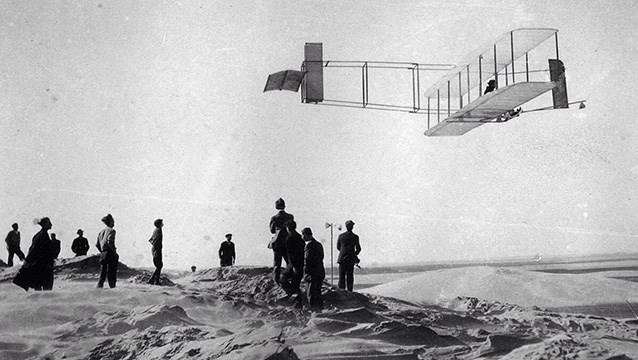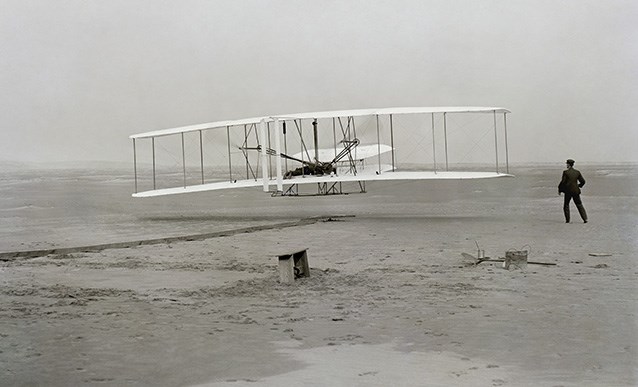Last updated: August 20, 2025
Article
Historic Aviation Places

The nation's remarkable aviation history is reflected in numerous districts, sites, buildings, structures, and objects eligible for the National Register of Historic Places. These historic aircraft, airfields, research and testing facilities, aeronautical and engineering research laboratories, production plants, military installations, and launch sites are worthy of preservation for their contributions to aviation technology, and for their association with the historically significant people and events that made the United States the world's leader in aviation.
Aviation in America began in the late eighteenth century with balloons. In 1783 John Quincy Adams and Benjamin Franklin watched a balloon flight in Paris. Soon thereafter, Americans imported the balloon. In the United States the 1830s opened a “golden age” of ballooning that continued into the 1860s. During the Civil War, Union and Confederate forces used balloons to fly reconnaissance and thereby began military aviation in this country. Balloons are the main lighter-than-air craft operating in aviation today; they are used for sport, show, and scientific research.
—Aviation In American History

Dayton Aviation Heritage National Historical Park
Race to Dayton's Aviation Heritage National Historic Park and stamp your passport at six locations, then receive a “Wilbear Wright” aviator teddy bear. It's a lot of fun!!!
Our Partnerships
This park is a cooperative effort between the National Park Service and five partners, including:
- Dayton History
- Ohio Historical Society
- Aviation Trail, Inc.
- Wright Family Foundation
- Wright-Patterson Air Force Base
- The park is also a member of the National Aviation Heritage Area, which also includes two other national venues: the National Museum of the U.S. Air Force and the National Aviation Hall of Fame.
Visit all to understand the significance of Dayton's aviation heritage.

Wright Brothers National Memorial
Though the Wright brothers were from Dayton, Ohio, and did much of their inventing and research there, it was the Outer Banks that met their criteria for privacy, steady winds, and wide open spaces with little vegetation. It was here, in this sparsely populated area known at the time as Kitty Hawk, with its massive dunes, that they set up camp so as to have the freedom to experiment with and perfect their machines until they achieved success.
After four years of experimentation, they achieved the first successful airplane flights in 1903. With courage and perseverance, these self-taught engineers relied on teamwork and application of the scientific process. What they achieved changed our world forever.
Wright Brothers National Memorial commemorates two ingenious brothers from Dayton, Ohio, who, in 1900, choose the sparsely populated area known as the Outer Banks to conduct a series of experiments that three years later resulted in the world's first heavier-than-air, powered, controlled flight. The story of these brothers embodies the American ideal of hard work overcoming all obstacles. Wilbur and Orville Wright were not just lucky bicycle mechanics, but succeeded because of study and scientific experimentation. Their story is the realization of a dream that had existed for centuries; it is not simply about building the first plane but rather about how they scientifically solved the problem. It is a story about those who inspired and those who aided the brothers, as well as the coastal area of North Carolina before, during, and after the dream came to life. Learn more about the Wright Flyer at the Aircraft Virtual Museum.
Want More Aviation Sites?
Find historical aviation sites close to where you live, visit: From Sand Dunes to Sonic Booms, A list of historical aviation sites.
